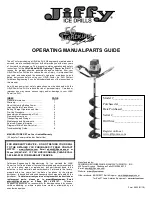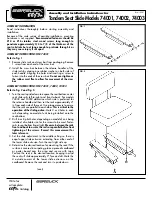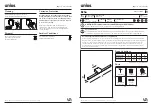
Assembly
8
5.
Leave the covers off and connect a 3 to 4 amp
battery charger to the battery posts (Fig. 3).
Charge the battery at a rate of 4 amperes or less
for 4 hours (12 volts).
4
1
2
3
1254
Figure 3
1.
Positive post
2.
Negative post
3.
Charger red (+) wire
4.
Charger black (–) wire
POTENTIAL HAZARD
•
Charging the battery produces gasses.
WHAT CAN HAPPEN
•
Battery gasses can explode.
HOW TO AVOID THE HAZARD
•
Keep cigarettes, sparks, and flames away
from the battery.
6.
When the battery is fully charged, disconnect the
charger from the electrical outlet and from the
negative and positive battery posts (Fig. 3).
7.
Slowly pour electrolyte into each cell until the
level is once again up to the upper line on the
battery case (Fig. 2) and install covers.
8.
Tilt the top of the battery rearward and slide it
into the traction unit.
IMPORTANT: Do not allow the battery posts
to touch the frame or hydraulic lines or it
may cause sparks.
9.
Secure the battery in chassis with the clamp and
bolts removed previously (Fig. 1).
10. Using the bolt and nut supplied with the battery,
connect the positive (red) cable to the
positive (+) battery post (Fig. 1). Slide the
rubber cover over the battery post.
11. Using the bolt and nut supplied with the battery,
connect the negative (black) cable to the
negative (–) battery post (Fig. 1).
Note:
Ensure that the battery cables do not
contact any sharp edges or each other.
12. Close the rear access cover.
Summary of Contents for Dingo TX 22306
Page 7: ...Safety 5 Slope Chart...











































